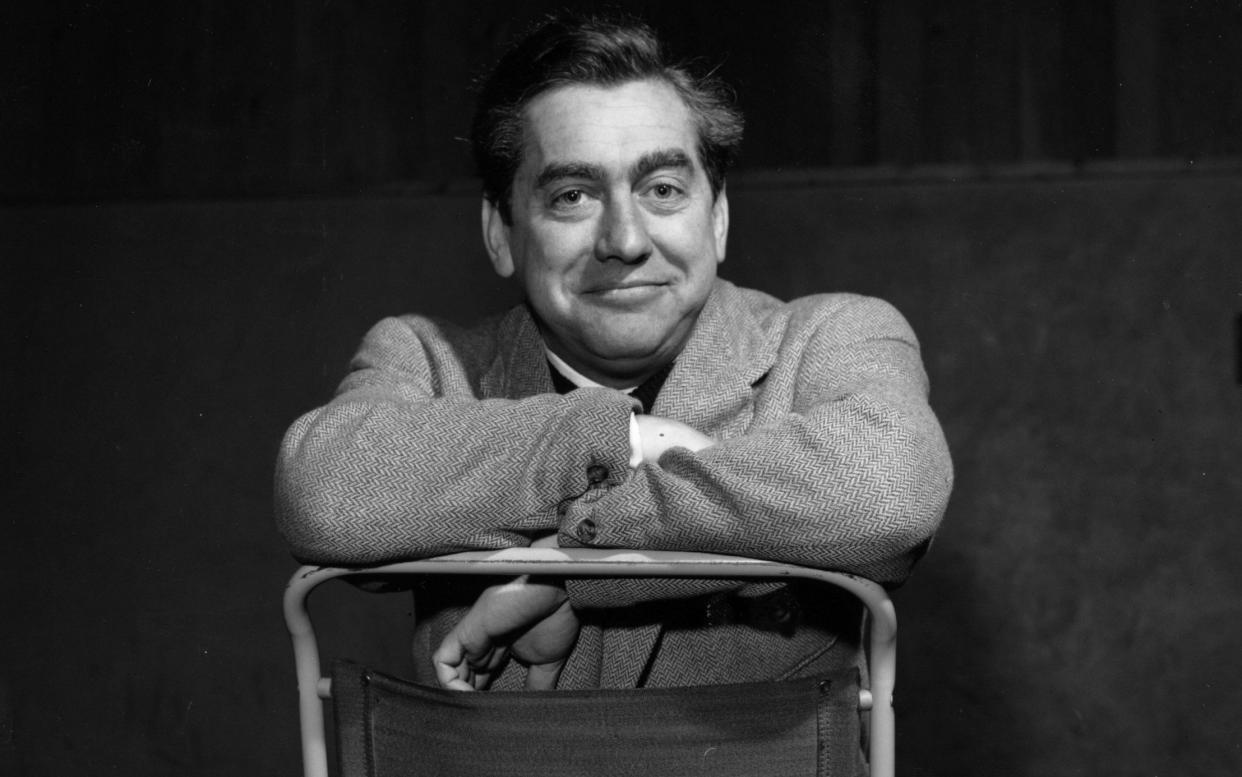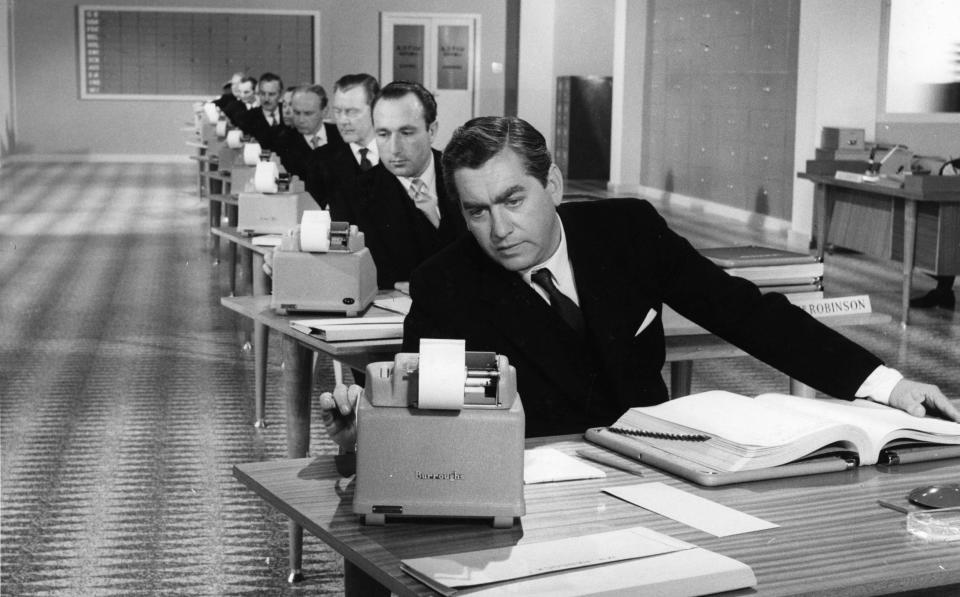The Tony Hancock we never knew – by his great-niece

Even at a very young age I knew that Tony Hancock was someone important, but I didn’t grasp the true scope and impact of my great-uncle’s career until much later. My father spoke to me about Tony often, though he only met him once, when he was about five years old. However, he instilled in me the importance of Tony’s legacy. I distinctly remember him telling me “you’re related to comedy royalty”.
Only as an adult did I truly appreciate the comedy genius behind Hancock’s Half Hour, brought to us by a man who still shapes British comedy – from Steve Coogan to Ricky Gervais – to this day.
Famously, Tony could “clear the streets” when Half Hour came on the radio in the 1950s and 1960s, and the concurrent BBC TV series – subsequently titled simply Hancock – was just as successful. His later attempts at more “serious” acting did not quite pan out, while an attempt to break America failed at the first hurdle. Tony took his own life in 1968, aged just 44, while in Australia. In 2002, a BBC Radio poll named him the greatest ever British comedian.
In January, a documentary, Hancock: Very Nearly an Armful, will shed a unique light on Tony’s inner life, with help from our remarkable family archive. My grandfather, Roger, affectionately known as Rog, wasn’t so vocal as my father about my great-uncle. As he was Tony’s younger brother and business partner, their history was a complicated one. However, Rog was fiercely protective of Tony’s legacy and how he was portrayed in the media and would stow away every piece of his history in the attic.
Following my father’s sudden death in 2020, I was tasked with taking over the family literary agency, Roger Hancock Ltd, set up by my grandfather in 1961, where he represented Tony before they fell out. With this, I unexpectedly became gatekeeper to Rog’s attic archive and to a much larger responsibility.

Growing up in the Hancock family, much like any other family, I’d spend Christmas with my grandparents. Our Christmas lunch would be followed by a screening of some of Tony’s more successful work, including The Blood Donor and The Radio Ham. The latter was a family favourite because my grandmother, Annie Leake, was an actress who played the angry neighbour complaining about the noise. Adding to the sense of Tony’s presence was being surrounded by what felt like very normal things. In my grandparents’ house a framed golden cassette of Hancock’s Half Hour hung in a downstairs corridor, alongside iconic black-and-white photographs of Tony taken by Henri Cartier-Bresson; posters from his various stage performances, a bronze bust of Tony’s head, a couple of Baftas lurking in Rog’s wood-panelled office.
Looking back, there were countless memories of Tony dotted about throughout our childhood. One of the most intriguing was the story of Tony’s suitcase that was brought back from Australia by Willie Rushton following his death, but lost thereafter. It was one afternoon in early 2021, while hunting for that elusive suitcase in a family storage unit, that I stumbled across several boxes of long forgotten memorabilia – Rog’s stash. During the subsequent months spent delving through the boxes, I uncovered the biggest, most perfectly preserved collection of artefacts relating to Tony’s life.
This was not just the usual collection of books, film reels, family photographs and scrapbooks of newspaper cuttings lovingly collected by his mother, Lilian (although I found those too), this was a cache of Tony’s scripts and contracts, photographs from his shows, diaries and notes, telegrams from fellow artistes, and even love letters from a mystery woman who was probably one of the last people to correspond with him. This archive, which provides an unparalleled insight into Tony’s personal life and career, had been painstakingly filed away by Rog, who treasured anything and everything to do with his brother. Perhaps most surprising of all, I discovered from Tony’s personal writings that, beneath the everyday struggles that he portrayed in his comedic cypher, lay a much deeper thinker.
There were pages upon pages of far-reaching notes and passionate scribbles. For instance, there is a lengthy section devoted to the evolution of man, suggesting that Tony spent more time pondering Darwin than Chaplin.
There are also notes on obscure histories of long deceased civilisations and diagrams on anatomy. The recurring and underlying theme to these thought-provoking meditations is an apparent desire, or need, to understand the history of man; who we are, how we came to be, and how we have evolved.
As is widely known, Tony suffered from depression and alcoholism; vicious diseases that ultimately destroyed him. I can’t help but wonder what part of these explorations into mankind played a part in that – did he dive too deep and find himself wanting? Or not deep enough to get the answers he needed? One thing I know for certain is that he was a complicated man who strived for an unattainable level of perfection. I wish he had been able to understand that his lack of perfection is what made him such a remarkable, relatable figure.
The public perception of Tony has always been that he was a terrifically brilliant comic. A troubled, grumbling man whose work so many people could relate to, due to his struggle with the menial and mundane tasks of life.
But still waters ran deep for Tony: rumour has it he used to carry copies of the Encyclopaedia Britannica around with him; comparable to how his character had a penchant for reading Bertrand Russell.

His thirst for knowledge and an obsession with trying to understand the unknown led him to scribble and scrawl on any scrap of paper he could get his hands on. From trying to decipher an ancient alphabet on the back of a script, to jotting down Carl Jung’s collective unconscious theory on a Post-it Note-sized pad. He even wrote a small chapter entirely dedicated to “mothers-in-law”.
Had Tony not succumbed to his depression, I think he would have liked to explore roles where he could have been taken more seriously. He played virtually the same character for almost 15 years and was perhaps a little typecast. It was probably difficult for an audience to view him as anyone but Anthony Aloysius St John Hancock from 23 Railway Cuttings. His previous foray into a more dramatic genre of cinema with the 1963 film The Punch & Judy Man failed to garner success at the time – audiences didn’t expect him to star in something so lugubrious.
Given the nature of his personal writings, I think there is a strong possibility he would have continued to push himself down a more profound route. A section of his notes were written in chapters, so perhaps there would have been a novel down the line. Maybe he would have taken a break from the spotlight and enjoyed writing screenplays. Who knows, maybe he would have gone on to lecture in universities.
I can speculate all day about what could have been for Tony’s life and how much more joy he could have brought to the world. But what I do know is that in a career that spanned 26 years, he managed to make such an impression on the world that, 60 years on from his death, we are still talking about him. I’m extremely proud to be a Hancock and help carry on his legacy.
'Hancock: Very Nearly an Armful' is on Gold on Saturday Jan 14 at 8pm

 Yahoo News
Yahoo News 
